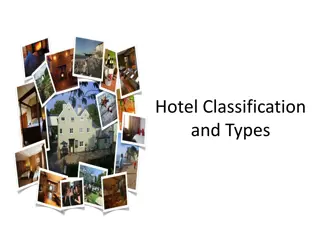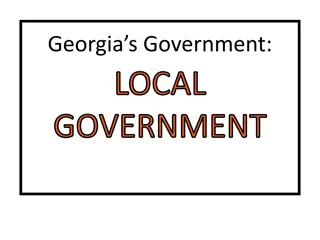Overview of Different Types of Governments and Their Classifications
Governments vary in structure and features, with classifications based on key characteristics like the concentration of power, participation in governance, and the relationship between branches. This overview covers various government types such as autocracy, democracy, oligarchy, and monarchy, highlighting distinctions like the rule of one person in monarchy or the shared power in democracy.
Download Presentation

Please find below an Image/Link to download the presentation.
The content on the website is provided AS IS for your information and personal use only. It may not be sold, licensed, or shared on other websites without obtaining consent from the author. Download presentation by click this link. If you encounter any issues during the download, it is possible that the publisher has removed the file from their server.
E N D
Presentation Transcript
No 2 governments are exactly alike. But, classified according to their features.
Autocracy- government in which 1 person has all of the power 2 main types of autocracy 1. Monarchy- king or queen rules nation 2. Dictatorship- one leader has total control over citizens
Democracy- rule of the people 2 types 1. Representative democracy- citizens elect leaders to represent rights & interests 2. Direct democracy- Citizens are directly involved in working of government
Oligarchy- small group has all of the power Noble families Military officers- Junta
Monarchy- Rule of one person Mono- one, single Archy- rule Monopoly, monogamy, monicle Oligarchy- Rule of few people Olig- few, small, scant Archy- rule Oligopoly Democracy- Rule of the people Demo ( )- people crat (kr tos)- rule, force, power Demographics, demonstrate
How do political scientists classify governments? 3 important & useful features classify governments 1. Who can participate in governing process? 2. The geographic distribution of governmental power w/in the state 3. The relationship between the legislative & executive branches of government
Democracy Dictatorship Supreme political authority rests w/ the ruler Rulers not accountable for policies & how they are carried out Autocracy- government where single person holds unlimited power Oligarchy- rule by small and usually self appointed elite Authoritarian- authority over people Militaristic- Supreme political authority rests w/ the people People hold sovereign power & government conducted only by consent of people Can be direct or indirect Direct-the people directly make and enforce laws Indirect- representative democracy, small group of chosen people make and enforce laws
Where is power to govern located? 3 basic forms 1. Unitary- all powers held by government belong to a single, central agency (centralized government Not the same as dictatorship Great Britain 2. Federal- powers of government divided between central & local governments A superior authority makes division of powers Australia, Canada, Mexico, Germany, India 3. Confederate- Alliance of independent states Central power is limited-states assign central gov. power Which form does the U.S. use?
Presidential Parliamentary Separation of powers between executive & legislative branches 2 branches independent & coequal President (chief executive) chosen separately of legislature Holds office fixed term Executive made of Prime Minister or Premier, & their cabinet Prime minister & cabinet members of legislative & executive branches Prime minister chosen by that party Stay in office as long as support of majority in parliament No checks and balances




























